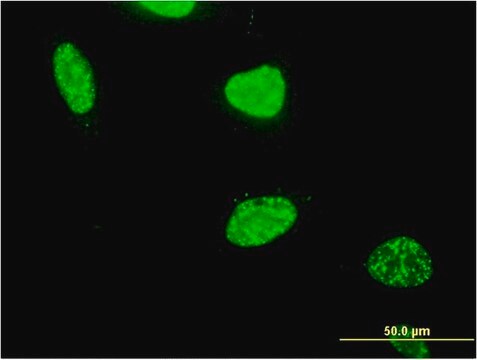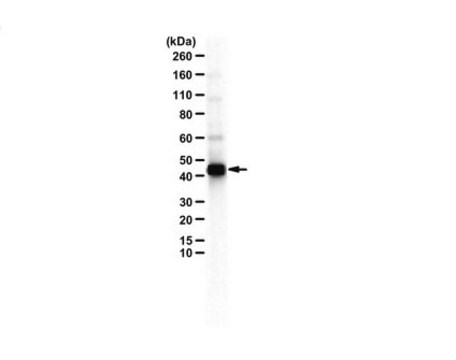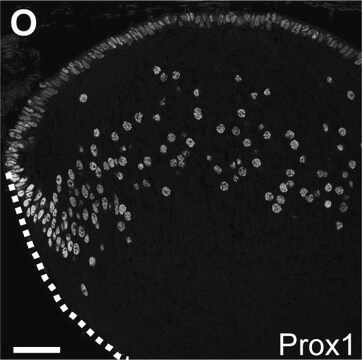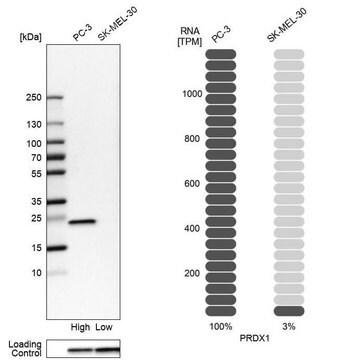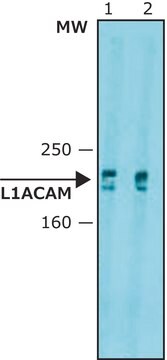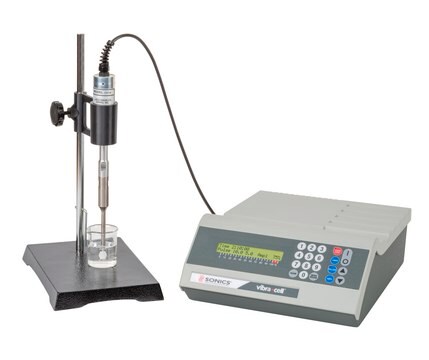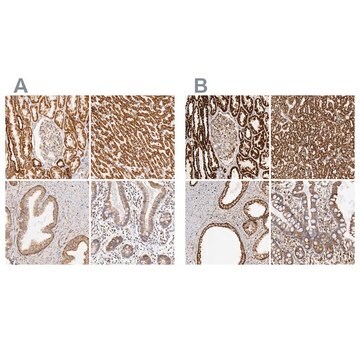ABE1877M
Anti-PAXIP1
from rabbit
Sinônimo(s):
PAX-interacting protein 1, PAX transactivation activation domain-interacting protein, PAXIP
About This Item
Produtos recomendados
fonte biológica
rabbit
Nível de qualidade
forma do anticorpo
affinity isolated antibody
tipo de produto de anticorpo
primary antibodies
clone
polyclonal
reatividade de espécies
human, mouse
embalagem
antibody small pack of 25 μL
técnica(s)
ChIP: suitable (ChIP-seq)
immunoprecipitation (IP): suitable
western blot: suitable
Isotipo
IgG
nº de adesão NCBI
nº de adesão UniProt
modificação pós-traducional do alvo
unmodified
Informações sobre genes
human ... PAXIP1(22976)
mouse ... Paxip1(55982)
Descrição geral
Especificidade
Imunogênio
Aplicação
ChIP-seq Analysis: Analysis: A representative lot detected PAXIP1 in ChIP-seq applications (Callen, E., et. al. (2012). Immunity. 37(6):971-85).
Immunoprecipitation Analysis: A representative lot detected PAXIP1 in Immunoprecipitation applications (Gong, Z., et. al. (2009). J Biol Chem. 284(11):7284-93).
Immunoprecipitation Analysis: 1 µg from a representative lot detected PAXIP1 in nuclear extract of wild type and PTIP KO mouse embryonic fibroblasts (Courtesy of Dr. Ji-Eun Lee and Dr. Kai Ge at NIH).
Western Blotting Analysis: A representative lot detected PAXIP1 in Western Blotting applications (Cho, Y.W., et. al. (2009). Cell Metab. 10(1):27-39; Gong, Z., et. al. (2009). J Biol Chem. 284(11):7284-93).
Epigenetics & Nuclear Function
Qualidade
Western Blotting Analysis: A 1:10,000 dilution of this antibody detected recombinant PAX-interacting protein 1.
Descrição-alvo
forma física
Armazenamento e estabilidade
Outras notas
Exoneração de responsabilidade
Não está encontrando o produto certo?
Experimente o nosso Ferramenta de seleção de produtos.
Código de classe de armazenamento
12 - Non Combustible Liquids
Classe de risco de água (WGK)
WGK 1
Ponto de fulgor (°F)
Not applicable
Ponto de fulgor (°C)
Not applicable
Certificados de análise (COA)
Busque Certificados de análise (COA) digitando o Número do Lote do produto. Os números de lote e remessa podem ser encontrados no rótulo de um produto após a palavra “Lot” ou “Batch”.
Já possui este produto?
Encontre a documentação dos produtos que você adquiriu recentemente na biblioteca de documentos.
Nossa equipe de cientistas tem experiência em todas as áreas de pesquisa, incluindo Life Sciences, ciência de materiais, síntese química, cromatografia, química analítica e muitas outras.
Entre em contato com a assistência técnica